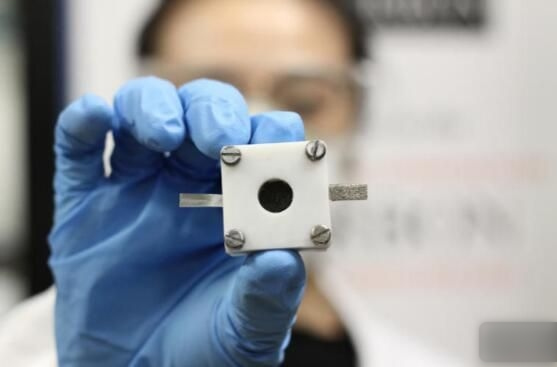According to ZDNet news, chemical engineering researchers at the University of Sydney (USyd) and Nanyang Technological University in Singapore have developed a new battery technology - zinc-air batteries. Researchers believe it can be used in electronic products to replace lithium-ion batteries.

It is understood that zinc-air batteries previously used expensive metals such as platinum and iridium oxide as catalysts, so their application range was limited to a small portion of electronic equipment such as hearing aids and railway signal systems. Nowadays, new technologies have begun to use high-performance, low-cost catalysts that are crystallized from metal oxides such as iron, cobalt, and nickel.
Zinc-air battery is a kind of metal air battery. It generates electricity by oxidizing zinc in the air. Compared with traditional lithium-ion batteries, it has the characteristics of large storage capacity, safety, environmental protection, and lower cost. Lithium-ion batteries have become the default battery option for smartphones and electric vehicles because of their light weight and high power supply rate. However, due to their nature, short circuits can cause very serious consequences. The zinc-air battery uses abundant resources of zinc metal itself, and is not as short-circuited as a lithium-ion battery, and its storage capacity is five times that of a lithium-ion battery.
“Our approach can produce a lot of high-performance and low-cost catalysts.†Professor Yuan Chen of the University of Sydney’s Department of Engineering Technology said, “We are working on some basic technological issues and we hope to develop sustainable metal air for our society. battery."
It has to be said that if such batteries can replace lithium-ion batteries in the future, such as smart phones and other electronic devices, one can make mobile phone life can increase, two smart phones are expected to add more features. Other rechargeable metal air batteries also include the use of magnesium and graphene.
There are five general body styles of ball Valves: single body, three-piece body, split body, top entry, and welded. The difference is based on how the pieces of the valve-especially the casing that contains the ball itself-are manufactured and assembled. The valve operation is the same in each case.
In addition, there are different styles related to the bore of the ball mechanism itself.
Ball valves in sizes up to 2 inch generally come in single piece, two or three piece designs. One piece ball valves are almost always reduced bore, are relatively inexpensive and generally are throw-away. Two piece ball valves are generally slightly reduced (or standard) bore, they can be either throw-away or repairable. The 3 piece design allows for the center part of the valve containing the ball, stem & seats to be easily removed from the pipeline. This facilitates efficient cleaning of deposited sediments, replacement of seats and gland packings, polishing out of small scratches on the ball, all this without removing the pipes from the valve body. The design concept of a three piece valve is for it to be repairable.
Stainless Steel Ball Valves, Brass Ball Valves, Sanitary Ball Valves, Water Ball Valves
ZHEJIANG KINGSIR VALVE CO., LTD. , https://www.kingsirvalves.com